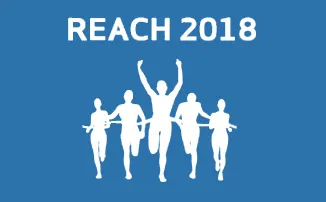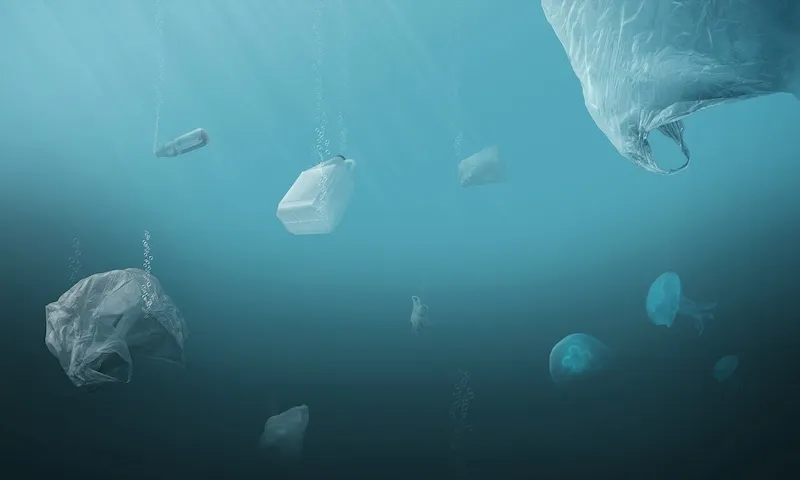
What changed with REACH Regulation
Manufacturers are responsible for the chemical safety of their products
Since the REACH Regulation's implementation in 2007, manufacturers have to register the substances, mixtures they produce. This responsibility has led to convincing results: lots of data in the public domain.
The fact that REACH has become a business issue for companies is one of the greatest achievements of this regulation.
Hazardous substances are progressively being substituted
The candidate list has enabled to restrict the use of SVHCs (Substances of Very High Concern). The final goal is a better communication about them, and in the long-run, pushing these substances out of the European market. Even if all the substances from the candidate list aren't prohibited by the EC (European Commission) yet, lots of manufacturers and exporters from outside the EU chose not to use them.
And after REACH 2018?
In an interview with Chemical Watch ,,Dick Sijm, ex-leader of the REACH Bureau at the Dutch National Institute for Health and Environment, advises CEOs to continue with their efforts to ensure chemical safety, even after the 31st of May deadline.
The European Commission wants to keep reducing sanitary and environmental impact of the chemical substances after this last REACH registration rush. Three main changes must be anticipated::
- Scientific data update
- REACH authorization
- Chemical exposure
Scientific data is evolving
The REACH and CLP regulations have already greatly contributed to the 2020 goal to minimize the negative health and environmental impacts of chemicals: they generate information on all hazardous substances used in the industry, and try to limit and manage the risks associated with their activity.
However, because of the necessary time to conduct the required tests, 5 to 7 years are needed to gather this information. Science regularly produces interesting results for companies: keeping in with the most recent trends is a major challenge now more than ever.
Authorizing or substituting chemicals: a tough call
Dick Sijm raises the issue of the lack of communication and information on the exposure to chemical substances. Indeed, this data requires complex and costly tests that are hard for the companies to implement.
So some companies prefer opening long and costly procedures such as REACH authorization in order to keep using substances that were classified as SVHC by ECHA, instead of seeking to substitute.
However you must keep in mind that REACH authorization is only granted for a given time and is a very costly process. It is mandatory to implement a substitution strategy in the long-term.
Better estimating chemical exposure
In his interview, Dick Sijm underlines the difficulty for companies to provide detailed and reliable data about the workers exposure to chemical substances. Toxicological studies, and more importantly exposure science, are new disciplines, and outside industrial branches such as metallurgy, the data related to the exposure of workers to chemical products is scarce and sometimes hard to obtain.
Though, initiatives like ENES (Expert network on exposure scenarios) allow companies to benefit from a better inclusion of this issue as well as a better communication explaining the reasons behind worker exposure control.
The harmonization of calculation methods, the improveded quality of scientific data, and the systematic communication of exposure scenarios will be the three main development lines allowing to control chemical substance exposure.
Check our REACH registration services for 2018
EcoMundo is an expert service provider for REACH registration 2018 Our services include:
- REACH compliance Service
- REACH consulting Service
- REACH for non-EU manufacturer
- REACH Registration
- Only Representative (OR) service
- REACH Late pre-registration and inquiry process
- Representation of your interests within the SIEF and/or consortium.
- Negotiation on your behalf and purchase of the Letter of Access (LoA) from the Lead Registrant
- REACH letter of access
- Data exchange and drafting of your REACH IUCLID dossier.
- Submission of your REACH dossier to ECHA and follow-up until acceptance
- Delivery of your REACH certificate
- Regulatory watch when needed
Need a quote for REACH registration?
Contact us via phone: for North America please dial + 1 (778) 231-1607 or for Europe +33 (0)1 83 64 20 54 or email us: contact@ecomundo.eu
What changed with REACH Regulation
Manufacturers are responsible for the chemical safety of their products
Since the REACH Regulation's implementation in 2007, manufacturers have to register the substances, mixtures they produce. This responsibility has led to convincing results: lots of data in the public domain.
The fact that REACH has become a business issue for companies is one of the greatest achievements of this regulation.
Hazardous substances are progressively being substituted
The candidate list has enabled to restrict the use of SVHCs (Substances of Very High Concern). The final goal is a better communication about them, and in the long-run, pushing these substances out of the European market. Even if all the substances from the candidate list aren't prohibited by the EC (European Commission) yet, lots of manufacturers and exporters from outside the EU chose not to use them.
And after REACH 2018?
In an interview with Chemical Watch ,,Dick Sijm, ex-leader of the REACH Bureau at the Dutch National Institute for Health and Environment, advises CEOs to continue with their efforts to ensure chemical safety, even after the 31st of May deadline.
The European Commission wants to keep reducing sanitary and environmental impact of the chemical substances after this last REACH registration rush. Three main changes must be anticipated::
- Scientific data update
- REACH authorization
- Chemical exposure
Scientific data is evolving
The REACH and CLP regulations have already greatly contributed to the 2020 goal to minimize the negative health and environmental impacts of chemicals: they generate information on all hazardous substances used in the industry, and try to limit and manage the risks associated with their activity.
However, because of the necessary time to conduct the required tests, 5 to 7 years are needed to gather this information. Science regularly produces interesting results for companies: keeping in with the most recent trends is a major challenge now more than ever.
Authorizing or substituting chemicals: a tough call
Dick Sijm raises the issue of the lack of communication and information on the exposure to chemical substances. Indeed, this data requires complex and costly tests that are hard for the companies to implement.
So some companies prefer opening long and costly procedures such as REACH authorization in order to keep using substances that were classified as SVHC by ECHA, instead of seeking to substitute.
However you must keep in mind that REACH authorization is only granted for a given time and is a very costly process. It is mandatory to implement a substitution strategy in the long-term.
Better estimating chemical exposure
In his interview, Dick Sijm underlines the difficulty for companies to provide detailed and reliable data about the workers exposure to chemical substances. Toxicological studies, and more importantly exposure science, are new disciplines, and outside industrial branches such as metallurgy, the data related to the exposure of workers to chemical products is scarce and sometimes hard to obtain.
Though, initiatives like ENES (Expert network on exposure scenarios) allow companies to benefit from a better inclusion of this issue as well as a better communication explaining the reasons behind worker exposure control.
The harmonization of calculation methods, the improveded quality of scientific data, and the systematic communication of exposure scenarios will be the three main development lines allowing to control chemical substance exposure.
Check our REACH registration services for 2018
EcoMundo is an expert service provider for REACH registration 2018 Our services include:
- REACH compliance Service
- REACH consulting Service
- REACH for non-EU manufacturer
- REACH Registration
- Only Representative (OR) service
- REACH Late pre-registration and inquiry process
- Representation of your interests within the SIEF and/or consortium.
- Negotiation on your behalf and purchase of the Letter of Access (LoA) from the Lead Registrant
- REACH letter of access
- Data exchange and drafting of your REACH IUCLID dossier.
- Submission of your REACH dossier to ECHA and follow-up until acceptance
- Delivery of your REACH certificate
- Regulatory watch when needed
Need a quote for REACH registration?
Contact us via phone: for North America please dial + 1 (778) 231-1607 or for Europe +33 (0)1 83 64 20 54 or email us: contact@ecomundo.eu







